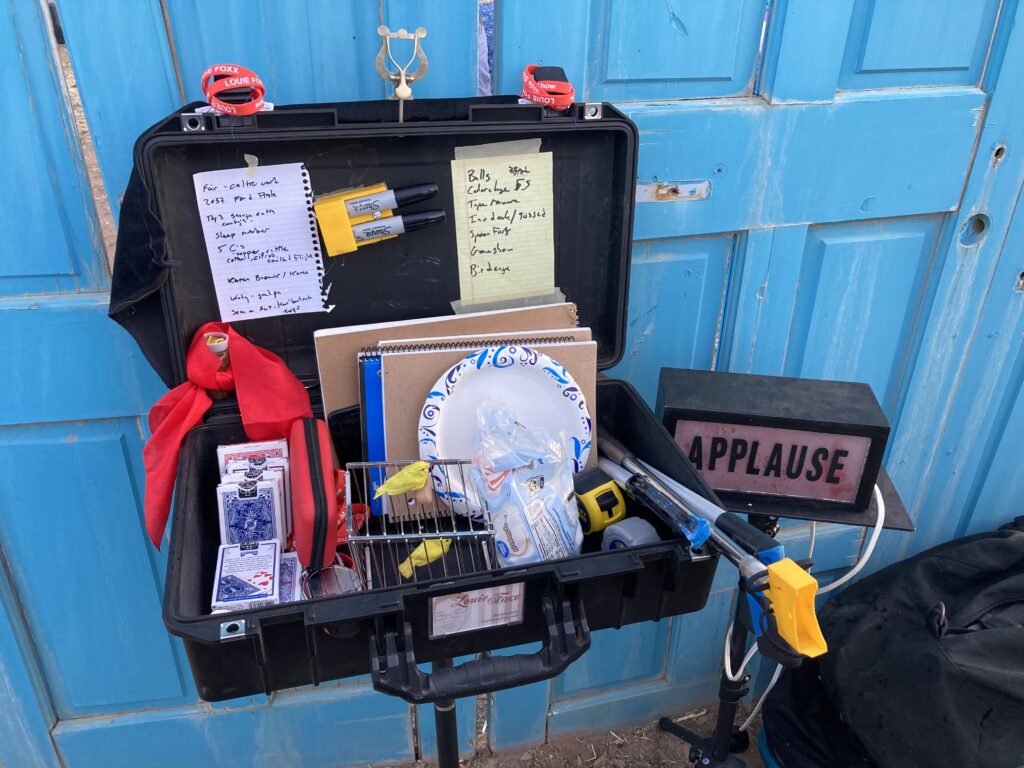Frequently I’m amazed when newer performers mention they have a 60 minute show. That’s a long time to do a show, I’m calling BS on a lot of them. They may have 60 mins of material, but usually it’s not a 60 minute show. I’ve got tons of material and have been been in magic a long time, but barely have a 60 min show.
What’s the difference between material and a show? Material is what you can do, but a show has texture and flow.
So, how do you put together a show? I start by writing out a set list, a list of tricks and how long they run. After the name of the trick, I write how long the routine runs and an “A” or and “S”. The “A” means someone from the audience helps me onstage and the “S” means that it’s done solo, with just me onstage. Sure there are tricks where I’m the only one onstage, but I use someone from the audience who stays seated, I consider those tricks to be solo tricks.
First I arrange it set list of the routines that I want to do. Here’s an example of what a short show set list would look like:
- cup – 2 mins – S
- hoop – 3 mins – S
- Card to Pocket – 5 mins – A
- Whip -6 mins – A
- Straight Suit- 6 mins – A /S (This uses someone on stage, but they return to their seat about halfway thru the routine)
The next thing I do is try to arrange them into an order that alternates solo and audience. Here’s what the revised list would might look like:
- cup – 2 mins – S
- Card to Pocket – 5 mins – A
- hoop – 3 mins – S
- Whip -6 mins – A
- Straight Suit- 6 mins – A /S
Next I look at the type of trick, luckily this particular set let isn’t super magic heavy, it’s more skill demonstrations which makes the next part easier. The goal is to no have two of the same type of effect next to each other. So if I had a “Bill To Lemon” in the list, I’d try to not put it next to “Card To Pocket” as both are teleportation type tricks.
Personally I have no problem putting things with similar props next to each other. For example I could put Card to Pocket and Tossed Out Deck next to each other. The effects are different and they both add different textures to the show.
That’s a general outline of how I put together a set list for a show. There are other factors that come into play. For example some tricks work better deeper into the show once the audience gets to know you, and so me tricks are openers or closers. In the set list above my two routines that use the audience are the Card To Pocket and the Whip routine. In theory I could swap the two tricks positions, however the whip is a big build up and it works better when the audience knows me. The card to pocket has a lot more magic that happens and works better for an audience that’s just getting to know me. Other considerations is how messy a trick is, or if it needs to be preset.
Once you have your set list, you can start to work on the flow of the show. You can then reveal things about yourself, add in call backs or put in something to tie it all together to start creating a show.



